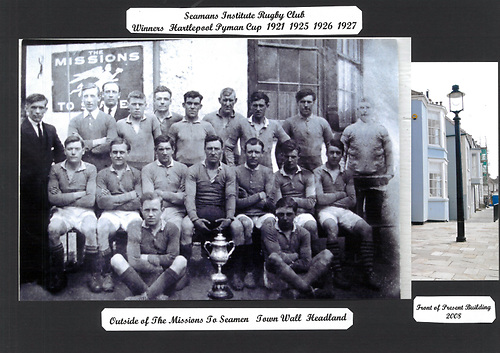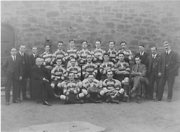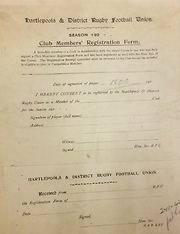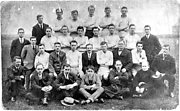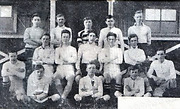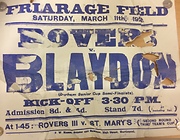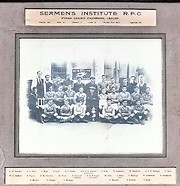 Hartlepool Sports & Leisure
Hartlepool Sports & Leisure
- Cinemas, Theatres & Dance Halls
- Musicians & Bands
- At the Seaside
- Parks & Gardens
- Caravans & Camping
- Sport
 Hartlepool Transport
Hartlepool Transport
- Airfields & Aircraft
- Railways
- Buses & Commercial Vehicles
- Cars & Motorbikes
- The Ferry
- Horse drawn vehicles
 A Potted History Of Hartlepool
A Potted History Of Hartlepool
- Unidentified images
- Sources of information
- Archaeology & Ancient History
- Local Government
- Printed Notices & Papers
- Aerial Photographs
- Events, Visitors & VIPs
 Hartlepool Trade & Industry
Hartlepool Trade & Industry
- Trade Fairs
- Local businesses
- Iron & Steel
- Shops & Shopping
- Fishing industry
- Farming & Rural Landscape
- Pubs, Clubs & Hotels
 Hartlepool Health & Education
Hartlepool Health & Education
- Schools & Colleges
- Hospitals & Workhouses
- Public Health & Utilities
- Ambulance Service
- Police Services
- Fire Services
 Hartlepool People
Hartlepool People
 Hartlepool Places
Hartlepool Places
 Hartlepool at War
Hartlepool at War
 Hartlepool Ships & Shipping
Hartlepool Ships & Shipping

1925 - Seamen's Institute -
What we know about this image :
The Institute team with the Pyman Cup in 1925, taken outside their Town Wall Headquarters. The building still stands and can be seen in the photo on the right and is today a private dwelling.
Although no details came with the image the club had been knocked out of the County Cup by the eventual winners, Heortensians,see their image of this site, but they retained their hold on he Pyman League trophy, their only haul for the season.
A typical Seamen’s Inst 1st XV of this season was H Allen; F Bennison, A Johnston, R Watson, T Metcalfe; LL Stevenson & G Wardrop; W Sanderson, S Doyle, J Doyle, A Brownless, T Stothard, A Weston, T Peak & J Watt, Reserve W Brown, many of them may be on this photograph.
Date (of image) : 30/4/1926
Donor : Ian Fletcher
Creator : Unknown
Part of the "Hartlepool BBOB RFC" collection
Location
Related items :
 1920 - 1928 - Pyman League - Zenith & Demise
1920 - 1928 - Pyman League - Zenith & Demise
The advent of the First World War saw the playing of Rugby Football officially suspended, but in the Hartlepool area, Rugby did carry on through the war on a casual basis.
Minor Club football firmly revived in 1920 with the formation of the Hartlepool & District Rugby Union under the Chairmanship of Magnus Irvin (1874-1952), Walter Robinson Bowring (1878-1934) and Robin Pyman supported by Dr W Scott-Gibb.
The years following this revival saw the zenith of the Pyman League and within a few years, 25 sides were competing in two Divisions, at one point the local Press speculated that the League should expand to include Middlesbrough and Redcar 2nd XVs to create a 3 Division structure.However, by 1926 only 3 clubs entered for Division 1, feeling that the Competition of the Leagues was “too hot” for them according to the “Mail” reports. In addition, breaches of the Rules regarding Players Transfers (a problem for Pre-War days also!), and a gift or honorarium to the Secretary saw the Competition Suspended by the County Union, and since 1928/29 season is has been a knockout Competition.
All of this competitive Rugby plus the Lormor Cup, Gibb Shield, and West Shield along with all of the County Cup Competitions and a chronic shortage of pitches. Though dominated by clubs based on the Heugh, the pitch situation was eased by players travelling all the way to West Hartlepool Rec at Rift House for many games!
A glance at the Clubs and their “H.Qs” between Throston Bridge and the Fish Quay Gates shows was a hive of Rugby the Heugh must have been in the “Roaring Twenties”. Red Rose operated from the Union in High Street and later the Lawrenson in Northgate. YMCA was in Southgate, Seaman’s Mission on Town Wall with United Services in Mary Street. Boys Brigade and Old Boys Institute were both housed in the Old Mill with Brotherhood in Northgate Methodists and St Mary’s in Darlington Street. The Brunswick was the home of Heortensians and of course Rovers teams operated out of their Memorial HQ in Moor Terrace
More detail »
 old Hartlepool
old Hartlepool
Old Hartlepool is the original fishing village which existed before West Hartlepool. The origins of ancient town of Hartlepool (Old Hartlepool) can be traced back to ca 647 AD. In the 8th century AD, Bede mentions it (“heopru” – the place where harts (deer) drink). The record goes blank then, and does not reappear until the 12th century. In 1201 King John confirmed a charter owned by Robert Bruce V. The name “Brus” or “Bruce” is still associated with parts of the town.
The fine abbey church of St. Hilda is mainly Early English, dating from 1185, on the site of an abbey which flourished as early as 658 AD. St. Hilda’s still flourishes and stands in a prominent place on the Hartlepool headland, and nearby the ancient town walls (completed ca 1322 as a defence against the twin enemies of the Scots and the sea) can still be seen.
On 8th February 1201, the town was granted its first royal charter by King John. A second royal charter was granted in 1593 by Queen Elizabeth (the First).
Hartlepool was visited several times by John Wesley on his preaching tours … he was certainly in the town in 1757 and 1786.
Old Hartlepool continued its independent existence until 1967, when local government reorganisation created the merger with its young neighbour, West Hartlepool.
More detail »




